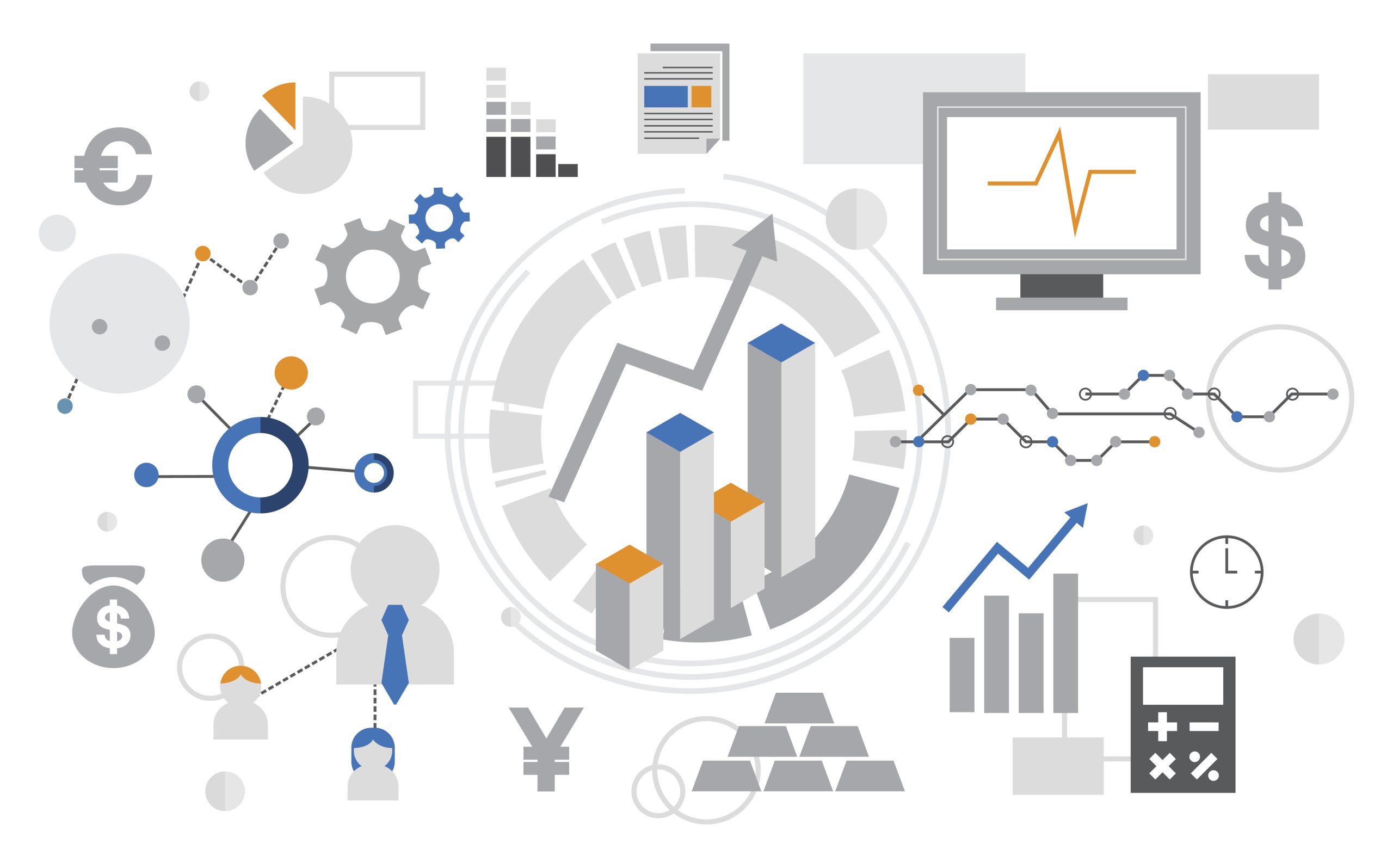The majority of modern organizations are driven by big data, and big data never sleeps. So whether data is moving from inputs to a data lake, from one repository to another, from a data warehouse to a data mart, or in or over the cloud, both data integration and phased data migration must be well-established, frictionless operations. Without an effective data transfer strategy, firms risk going over budget, developing overly complex data procedures, or discovering that their data operations are performing below par.
Migration of Data – what is it?
The process of migrating data between systems is known as data migration. It might appear pretty straightforward, but it requires changes in storage and applications.
Any data transfer inside the extract/transform/load (ETL) process will involve at the very least the transform and load processes. This means that before it can be loaded into the desired location, the extracted data must first undergo a number of preparation processes.
Many reasons exist for why businesses migrate their data. They may need to replace databases, create a new data warehouse, rework the entire system, or combine fresh data from an acquisition or other source. When implementing a new system alongside already running applications, data migration is also important.
Importance of Data Migration Strategies
Performance and competitiveness are generally the goals of data migration, regardless of its exact purpose. It’s important to get it right, though.
Migrations that are less successful may produce erroneous data with redundant information and unknowns. Even though the original data is adequate and totally usable, this can still occur. Additionally, any problems that did exist in the source data may get worse when they are introduced into a new, more advanced system.
An extensive data migration plan prevents a bad experience that creates more problems than it solves. Inadequate planning can ultimately cause migration projects to fail, along with missing deadlines and running over budget. Instead of subordinating migrations to another project with a vast scope, teams should give migrations their full attention while planning and strategizing the task.
These factors should be considered in a strategic data migration plan
A complete audit of the source data is needed before migration. Ignoring this step can lead to unexpected issues.
The first step in cleaning up your source data is to identify any issues and resolve them. As a result of the work’s scale, additional software tools and third-party resources may be required.
Data degrades over time, becoming unreliable, therefore maintenance and protection are necessary. This means that controls must be in place to maintain the quality of the data.
Information governance Data quality tracking and reporting are crucial for a better understanding of data integrity. The methods and equipment used to generate this information ought to be very comprehensible and, when practical, automated.
Data migration plans should also include a step-by-step process for bringing in the right tools and software.
Strategies for migration of data
A data migration strategy can be built in a number of ways. The most suitable solution will depend on the organization’s specific needs and requirements. There are, however, essentially two types of strategies: big bangs and trickles.
“Migration of the Big Bang“
The entire transfer is finished in a constrained amount of time during a big bang data migration. As data undergoes ETL processing and is transferred to the new database, live systems are unavailable.
The appeal of this approach is, of course, that everything happens in a single event that has a time limit and takes only a short amount of time to finish. However, because the company functions with one of its resources unavailable, the strain might be great. It runs the risk of being implemented improperly.
Think about running the migration process before the actual event if the big bang approach makes the most sense for your business.
“Migration in trickles”
The migration procedure is finished in stages with trickle migrations. There will be no downtime or operational hiccups because the new system and the old one are implemented simultaneously. Data can continue to move thanks to real-time processes.
It can be quite complex to design these implementations in comparison to the big bang approach. Adding complexity typically reduces rather than increases risks, if it’s done correctly.
A guide to data migration best practices
The following best practices should be considered regardless of the implementation method:
The data should be backed up before running. Data loss is not an option in the event that something goes wrong during installation. Before moving on, make certain that backup resources exist and have been thoroughly tested.
Adhere to your plan. A lot of data managers create plans only to abandon them when things go “too” smoothly or become out of control. Prepare for the possibility that the relocation process will be difficult and perhaps irritating at times, and then follow your strategy after that.
It’s all about testing. To ensure that you will achieve the desired results, test the data migration during the planning and design phases, as well as during implementation and maintenance.
An effective data migration strategy can be broken down into six key steps
Although data migration strategies vary depending on the organization’s needs and goals, they usually follow a similar pattern:
1. The source should be explored and assessed
Before migrating data, it is important to be aware of what is being moved and how it will fit into the target system. Recognize how much data is being pulled over and how it appears.
It may be necessary to map some fields to the target system without mapping others. To fill any gaps within a source, additional data fields may have to be pulled from another location. Identify which items need to be migrated, which can be left behind, and which may be missing.
In addition to fulfilling the conditions for data fields to be transferred, perform an audit on the actual data included therein. You can question if you actually need to migrate that data in the first place if there are fields that are underpopulated, there are many incomplete data pieces, there are errors, or there are other issues.
An organization may waste time and money on migration if it skips this source review stage and thinks that everyone understands the data. Even worse, the company might encounter a serious data mapping problem that would prevent any forward motion.
2. The migration should be defined and designed
Organizations decide in the design process whether to migrate in a huge explosion or a trickle. Additionally, the technical architecture of the system must be described, as well as the migration procedures.
You can start defining deadlines and any project problems after taking into account the design, the data to be pulled over, and the destination system. The entire project should be documented by the time this step is complete.
Security plans for the data should be considered during planning. Throughout the plan, protection should be threaded for any data that needs to be protected.
3. Create a solution for migration
The temptation to use a “just enough” development strategy when dealing with migration exists. But it’s important to get it correctly because you’ll only do the implementation once. Breaking the data down into smaller groups and developing each category one at a time, followed by testing, is a frequent strategy. It might make sense to develop and test simultaneously if an organization is working on a very large migration.
4. A live test should be conducted
The testing process does not end with the build phase of testing the code. In order for the data migration design to be accurate and complete, it is crucial to test it with real data.
5. The switch is flipped
The plan’s style can be implemented after final testing.
6. Performing an audit
Establish a system for auditing the data once the migration has gone live to ensure its accuracy.
An application that migrates data
It’s difficult and time-consuming to create data migration tools from start and manually code them. Data technologies that make transfer simple are more effective and economical. When looking for a software solution, keep the following things in mind when choosing a vendor:
- The solution’s compatibility — Can it be used with the current operating system and software?
- Availability — Do the software’s data limits exceed the future needs for data?
- Secure the platform — Spend some time looking at a software platform’s security settings. One of your most significant resources is your data, which needs to be kept safe.
- Affecting speed — Can the platform process data quickly?
The migration of data to the cloud
For faster time to market, better scalability, and less reliance on technical resources, businesses are increasingly moving some or all of their data to the cloud.
To retain data on-site and within the organization’s physical resources, data architects used to be entrusted with setting up enormous server farms. A worry about cloud security contributed to the decision to move forward with on-site servers. This migration barrier has, however, mostly been removed as major platforms embrace security procedures that bring them on a level with traditional IT security (and necessarily in conformity with the GDPR).
Utilizing a highly scalable and secure cloud integration platform-as-a-service along with the appropriate cloud integration tools, users may speed up cloud data migration initiatives (iPaaS). Drag-and-drop functionality helps to ease complex mapping, and Talend’s open-source underpinnings make our solution economical and effective. Talend offers a set of open source, cloud-native data integration solutions.
Data Migration: A Guide to Getting Started
When you upgrade your systems, move to the cloud, or consolidate data, you are likely to migrate your data. There is a lot of work to do for this important project, and it must be done correctly to protect the integrity of the data.
The platform from Talend provides free, open-source data tools that help speed up each stage of data transfer, including data preparation, integration, and forward data streaming. Investigate the software that might assist you in starting your data migration procedure. Test out Talend Data Fabric right away.






























































